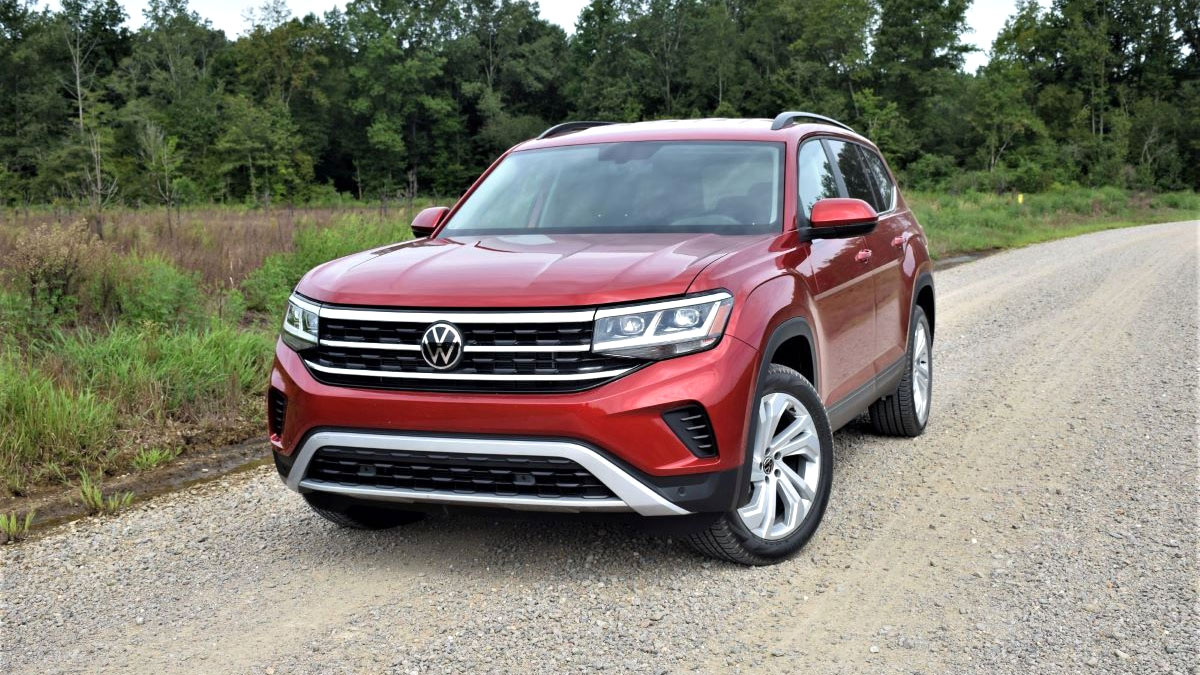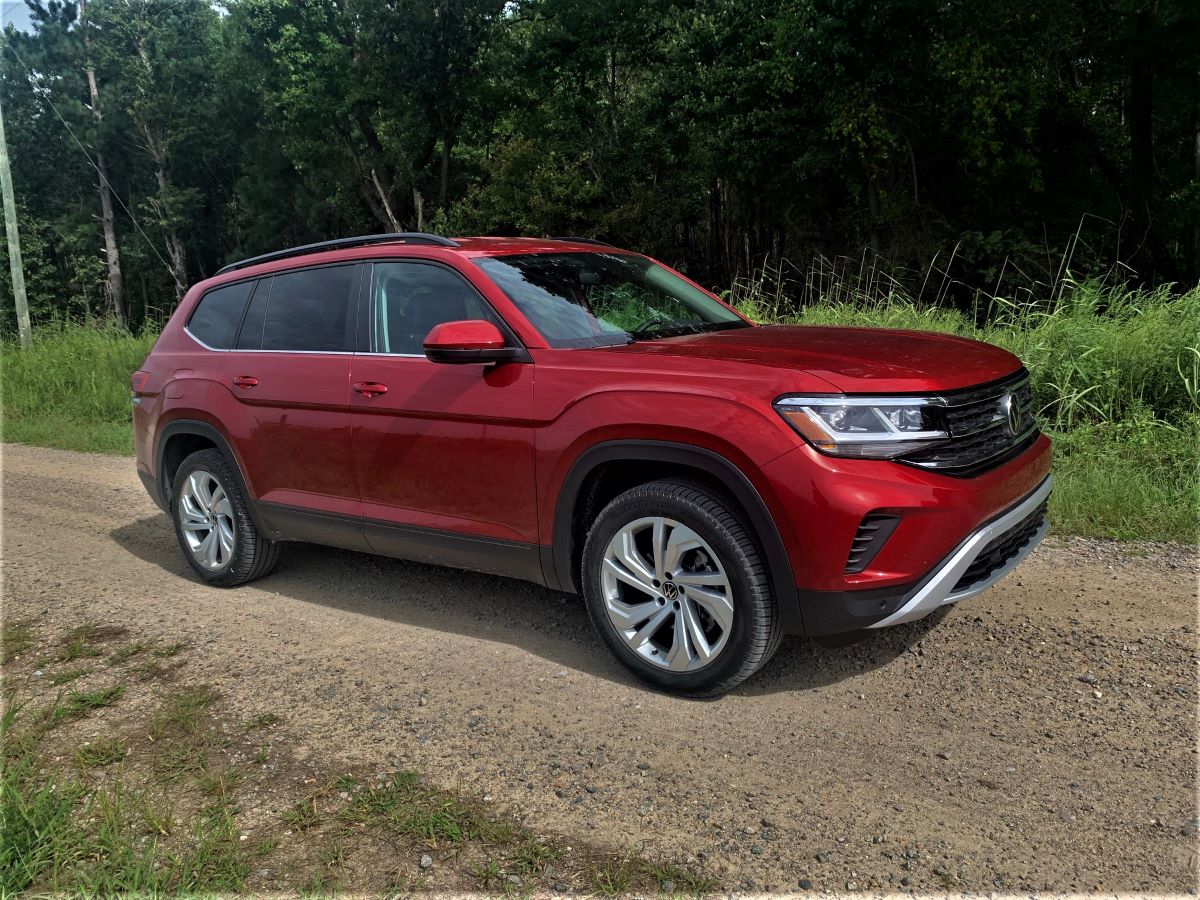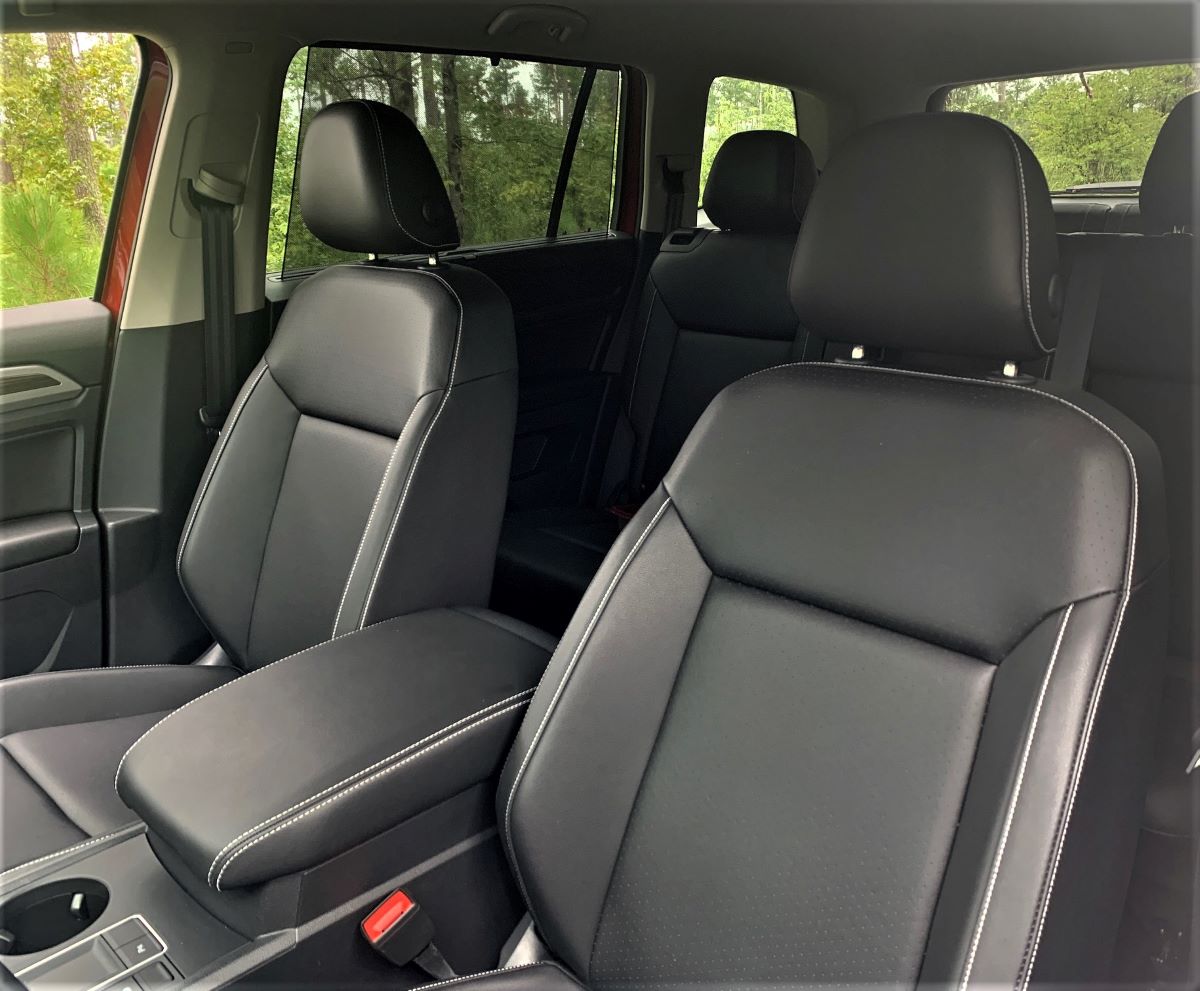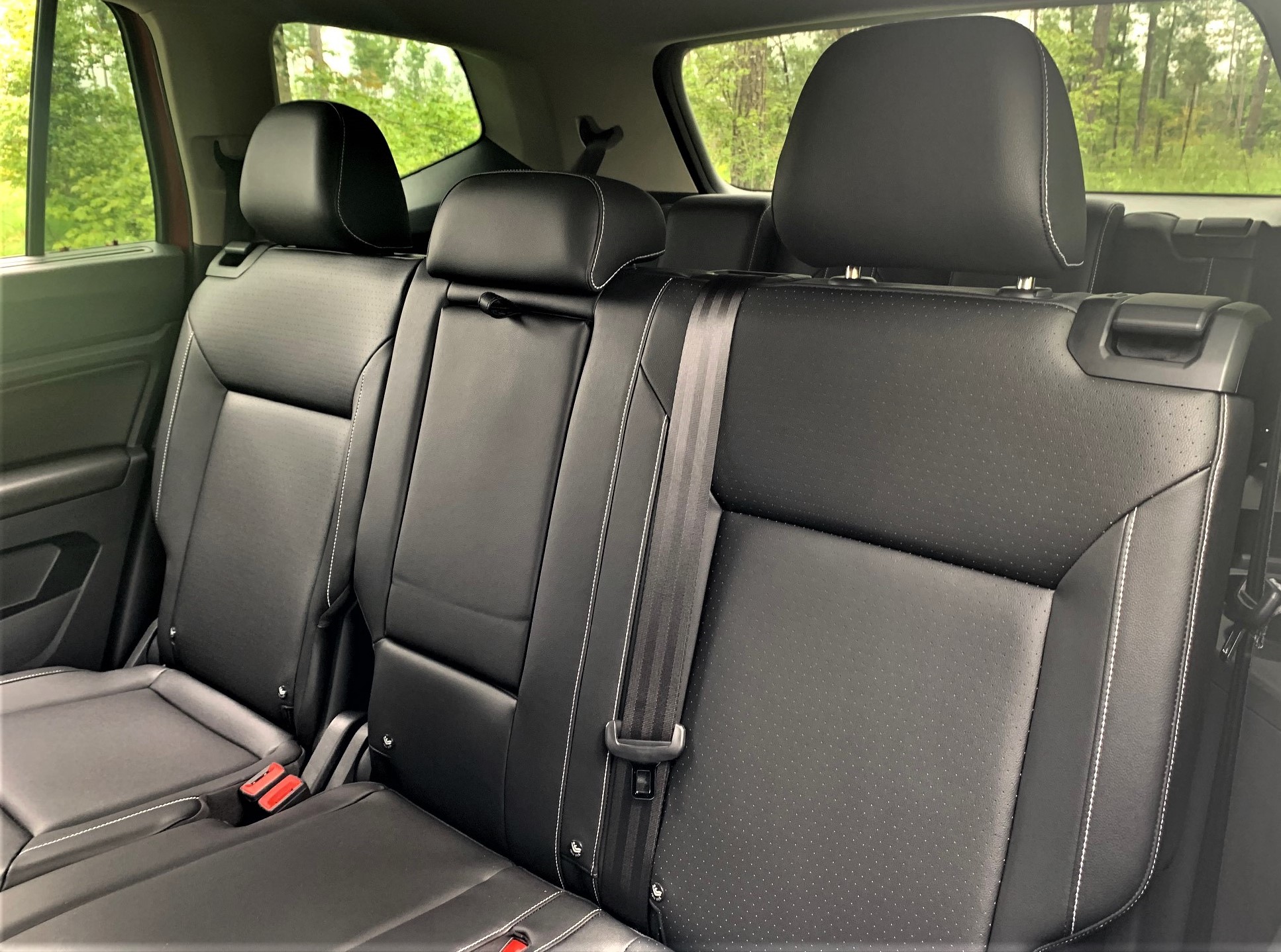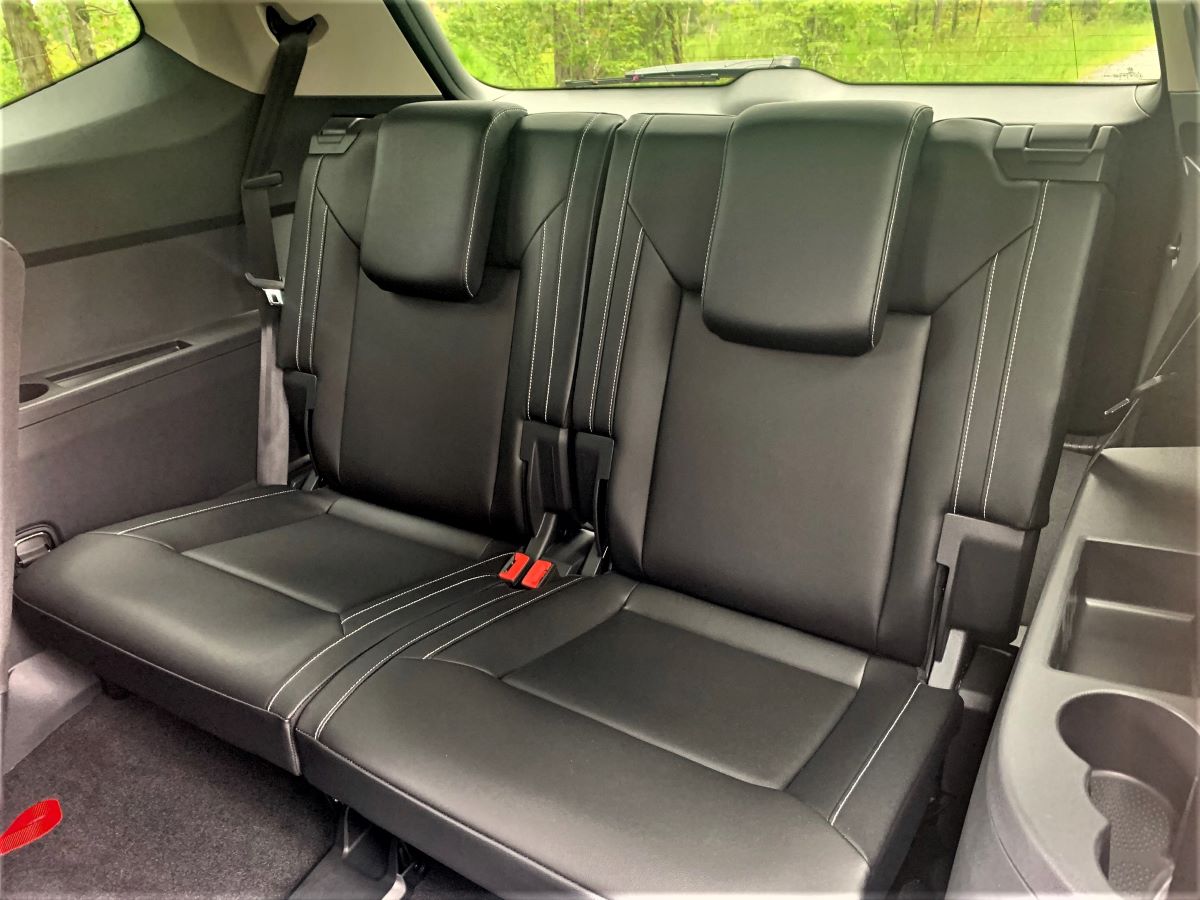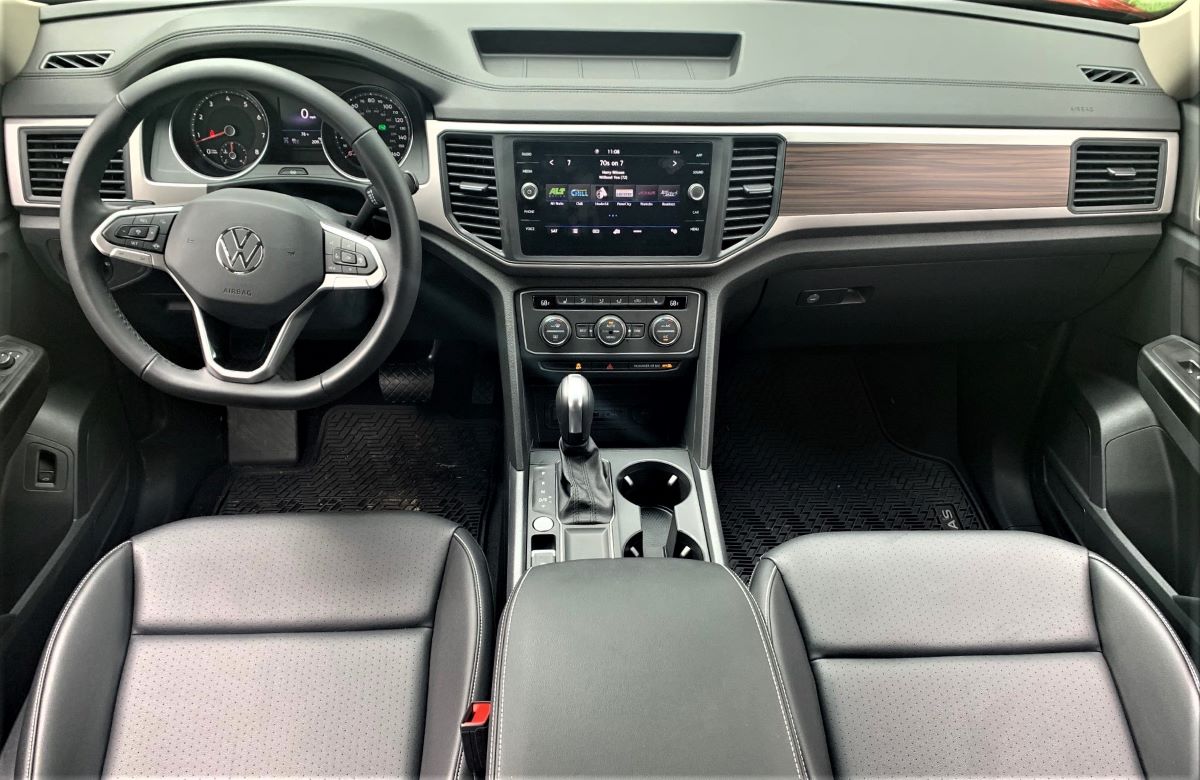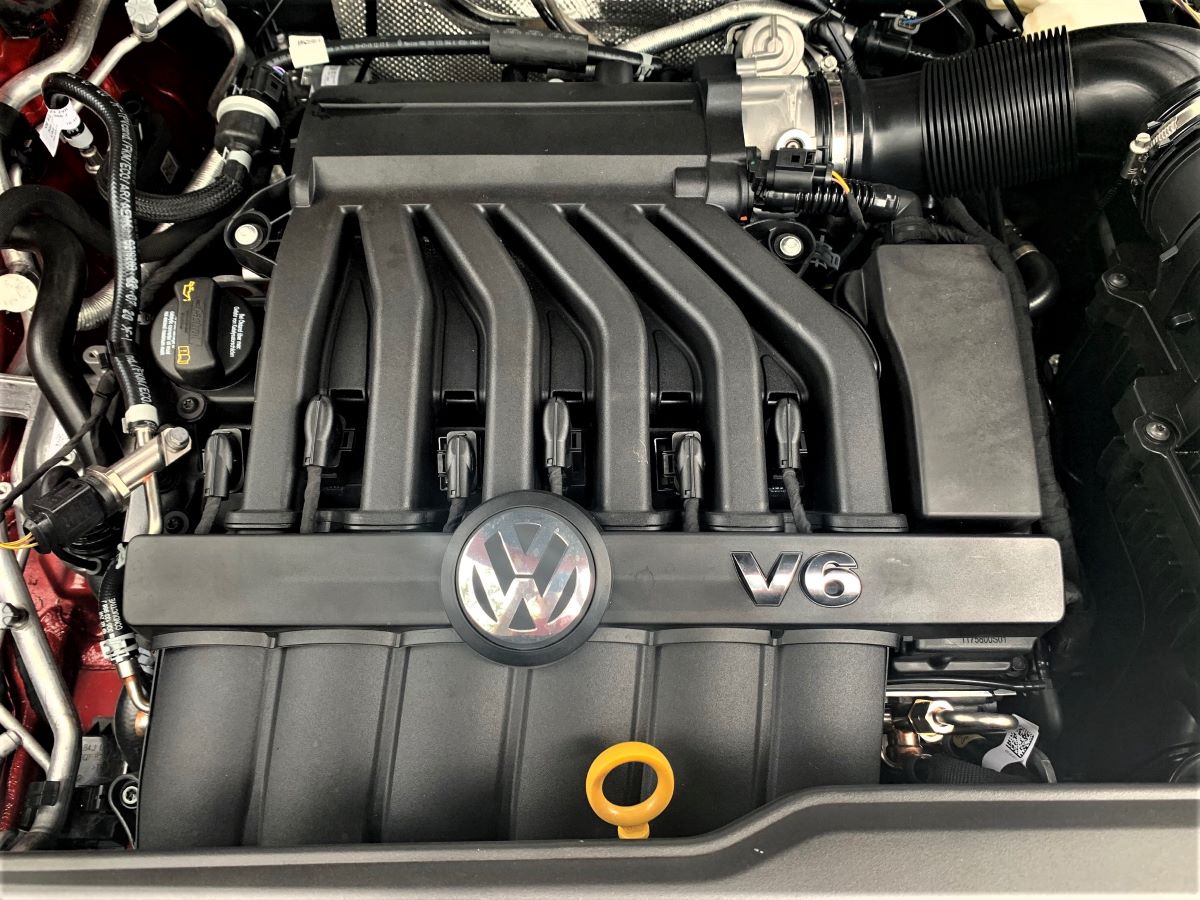Volkswagen’s Atlas offers ample room for seven.
We love our crossovers as they seem to do everything we want in a family vehicle: hold passengers, haul equipment, tow a boat, offer top technologies and safety features, and simply supply a better ride experience than family movers of the past.
The Volkswagen Atlas is one such model, a three-row midsize crossover with room for seven. We test drove one recently and continue to rate it as one of our favorites in a highly competitive category.
2020 Volkswagen Atlas Review
Volkswagen offers the 2020 Atlas in 16 configurations based on trim, powertrain, and drivetrain. Prices range from $31,545 for the base S model with front-wheel drive and the four-cylinder engine to $49,195 for the SEL Premium with standard all-wheel drive and the V6 engine. Add $1,020 for the destination charge on all trims.
Most models come with the standard engine, which is front-wheel-drive only. Upgrading to the V6 adds $1,400 or $1,800 to your cost, depending on the trim. Upgrading to all-wheel drive is another $1,800 charge.
Exterior
The Atlas is big, bold, and beautiful. This crossover SUV wears its sheet metal well.
We’ve been a fan of this model ever since attending its roll-out at a Texas press preview in 2017. While there, we studied its visage carefully, admiring the broad grille, wide hood, and unusual character lines along its sides.
What pleased us the most and still gets our attention today, is that the Atlas is and was a clean departure from what the brand offered previously, namely the first-generation Tiguan.
Since then, the original Tiguan has been replaced by an all-new and larger model. Together, the duo underscores that Volkswagen is taking the segment seriously. Indeed, just this month VW teased us with a new model, this one slotting beneath the Tiguan.
All Atlas models come with LED headlights with LED daytime running lights. Typically, base models don’t offer these features, so there is strong value here. Standard taillights give way to LED lights beginning with the SEL. Other standard features include power-adjustable and heated side mirrors, roof rails, and 18-inch aluminum-alloy wheels.
Among the available features are heated washer nozzles (SE), a panoramic sunroof (SEL), a power liftgate (SE Tech), trailer hitch (V6 models only), 20- and 21-inch wheels, and puddle lights (SEL Premium).
Interior
The Volkswagen Atlas doesn’t match the opulence of the Hyundai Palisade, Kia Telluride, and Buick Enclave (except at the top level), but it isn’t spartan either. What impresses us about this crossover is that there isn’t a penalty seat in the house, including the third-row seat.
As advertised, the Atlas seats seven in a 2-3-2 configuration. You can swap out the middle row bench seat for a pair of captain’s chairs and that’s something we recommend unless you absolutely require seven seating positions.
But even with the bench seat in place, the middle row moves and tilts well forward, making third-row access and egress an easy proposition for passengers. Very importantly, the Atlas can do this with three car seats in place – that’s a remarkable feat!
And once you’re seated back there, even adults approaching 6-feet, 6-inches will find enough head and leg room. Yes, that’s a fact, one that we confirmed a few years back when a VW rep measuring 6 feet, 8-inches sat inside.
Cargo space measures 20.6 cubic feet behind the third row, 55.5 feet behind the second row, and 96.8 cubic feet behind the first row.
Volkswagen isn’t Audi, but it carries the same design, fit and finish philosophy of the VW Group’s main luxury marque. The cache belongs to Audi, but Volkswagen does quite well when transforming a simple design into something pleasing.
Every seat is also comfortable and that says a lot. We’ve sat in third-row seats that were thin on padding. Not so with the VW. None of the seats are especially plush, but they get the job done.
Only the base model has cloth seats. Every other trim has imitation leather, with the leather-wrapped SEL Premium the exception. The S trim comes with full power accessories, a tilt-and-telescopic steering column, manual-controlled front seats, and dual-zone climate control.
Move up to the SE (where we recommend shoppers begin their search), and this model brings in keyless entry with push-button start, three-zone climate control, a leather-wrapped steering wheel, a 10-way power driver’s seat, heated front seats, and rear sunshades.
Other features available include stainless steel pedal caps, ambient lighting, an 8-way power front passenger seat, ventilated front seats, and heated outboard second-row seats.
Tech
On the tech front, Volkswagen supplies the base Atlas with a 6-speaker audio system, a 6.5-inch touch-screen display, Bluetooth, one USB port, and app connect. From the SE on up, an 8-inch touch-screen display is included. VW also brings in HD Radio, satellite radio, and bumps up the USB count to four.
If you want navigation, it is included beginning with the SEL trim. A 12-speaker Fender audio system is exclusive to the SEL Premium trim – we think that’s a shame as it should be available on the other trims as a spend-up line item.
Volkswagen’s Car-Net is standard across the model line and represents a system that connects a customer’s smartphone to the vehicle. You’ll also find MirrorLink, Android Auto, and Apple CarPlay smartphone compatibility. A 115-volt power outlet appears starting in the SE Premium Tech model.
Safety
Safety is a big deal to consumers and this segment requires manufacturers to be on top of their game. A suite of airbags, stability and traction control, and a rearview camera are government requirements. Automakers go well beyond all that to meet what customers demand.
For 2020, the Volkswagen Atlas comes with forward collision warning and autonomous emergency braking with pedestrian monitoring (front assist). VW also includes blind-spot monitoring and rear traffic alert with the S and SE trims.
Move up to the SE with the Tech Package and this one includes adaptive cruise control and lane keeping assist. Park distance control shows up with the SE Tech with R Line. Features such as parking steering assistant, high beam control, and an overhead view camera are exclusive to the top-trim SEL Premium.
Performance
Volkswagen offers a pair of engine choices with the 2020 Atlas. The standard motivator is a 2.0-liter turbocharged four-cylinder engine that develops 235 horsepower and 258 pound-feet of torque.
We see this engine in a variety of applications including as the upgraded engine in the compact Jetta sedan, the main mover of the midsize Passat sedan, and the engine of choice in the small Tiguan crossover.
Also available is Volkswagen’s 3.6-liter V6 engine with 276 horsepower and 266 pound-feet of torque. This engine is now relegated to the Atlas only, underscoring the shift to smaller, but boosted engines in all other Volkswagen models. Both engines work with an 8-speed automatic transmission.
Our test Atlas SE came with the V6 engine and front-wheel drive.
The power differences between the two engines are small, but particularly narrow as soon as the torque kicks in. The turbo spools quickly and supplies ample low-end grunt, which makes it a compelling choice for many drivers.
The downside is that as equipped, this engine’s tow rating is just 2,000 pounds, while the V6-powered Atlas with the tow package can pull up to 5,000 pounds.
We’ve tested Atlas models with both engines and give the V6 the edge, particularly for its robust step-off power. The V6 moves forward steadily with the transmission quickly serving up gear changes. This engine’s performance rating trails all competitors, however, including the Toyota Highlander (3.5L; 295 hp), Chevrolet Traverse (3.6L; 310 hp), and the Kia Sorento (3.3L; 290 hp).
There are many things we like about the Atlas and the way it drives and feels is one of them. Smooth handling and a comfortable ride are two of its strong suits, the latter buoyed by the standard four-wheel independent suspension.
Like nearly every other high-profile vehicle, the Atlas leans as it corners when driving fast. We do like its firm brakes and tight turning radius – on the fuel economy side, you’ll be hard-pressed to maintain 20 mpg and that’s worse than average.
Competitive Set
It seems like every manufacturer has at least one midsize, three-row crossover utility vehicle. That’s not surprising because the crossover has largely replaced the minivan, which was swapped out for wagons and sedans of yore.
If you’re cross-shopping the Volkswagen Atlas, you’ll want to look at the Atlas Cross Sport as well, the two-row variant of this model. Beyond that, you’ll find the Ford Explorer, Dodge Durango, GMC Acadia, Buick Enclave, and the Chevrolet Traverse from the domestic producers.
Other models include the Toyota Highlander, Honda Pilot, and Nissan Pathfinder. The Hyundai Santa Fe XL is now gone, replaced by the Hyundai Palisade. From Kia, you have both the Sorento and the Telluride.
Rounding out the list of competitors are the Subaru Ascent and Mazda CX-9. That’s more than a dozen models to consider in this segment.
Our Recommendation
We recommend launching your search with the SE trim with the Tech package. This one brings in more standard features and many of the tech items customers want.
Add in the second-row captain’s chairs ($550) and the panoramic sunroof ($1,200) and your cost remains below $40,000 with the base engine. That represents a competitive price point for Volkswagen’s largest model.
|
See Also – Behind the Wheel: 2018 Volkswagen Atlas
Photos copyright Auto Trends Magazine. All rights reserved.
- 2024 Mazda CX-50: A Compact SUV with Premium Aspirations - Apr 15, 2024
- 2024 Ford Mustang (Iconic Pony Car Evolves) - Apr 4, 2024
- 2024 Ford Maverick (Looks Like a Truck, Drives Like a Car) - Mar 28, 2024

